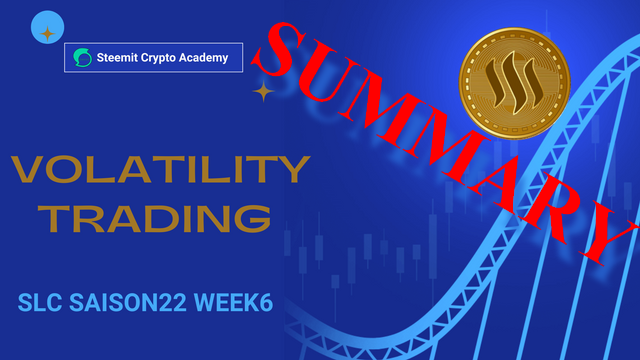Introduction
Volatility is the heartbeat of financial markets, especially in the world of cryptocurrencies. Traders often leverage price fluctuations to maximize their profits. This week’s Steemit Crypto Academy Contest focuses on Volatility Trading, a strategy that involves profiting from market price swings. In this summary, we’ll explore key concepts, techniques, and risk management strategies essential for successful volatility trading.
Understanding Volatility in Trading
Volatility refers to the degree of price fluctuation in a financial asset over a given period. Cryptocurrencies, known for their high volatility, present lucrative opportunities for traders who can navigate market movements efficiently.
Types of Volatility
1.Historical Volatility (HV) – Measures past price movements to determine how much an asset fluctuated over a period.
2.Implied Volatility (IV) – Represents the market’s expectations of future price movements, often reflected in options pricing.
3.Realized Volatility (RV) – The actual volatility observed in an asset’s price over a specific timeframe.
Volatility Trading Strategies
Here are some effective strategies that traders use to capitalize on price swings:
- Breakout Trading
Breakout traders identify key support and resistance levels and enter trades when the price breaks through these levels, anticipating strong momentum in the direction of the breakout. - Bollinger Bands Strategy
Bollinger Bands help traders identify overbought and oversold conditions. When prices touch the upper band, it may signal an overbought market; when they touch the lower band, it may indicate an oversold market, leading to potential reversals. - Mean Reversion Trading
This strategy assumes that prices tend to return to their mean (average) over time. Traders look for assets that deviate significantly from their average price and anticipate a correction. - Scalping and High-Frequency Trading (HFT)
Scalping involves making multiple quick trades to take advantage of small price changes. High-frequency traders use algorithms to execute trades at lightning speed. - Options Trading for Volatility
Options allow traders to profit from volatility without predicting the direction of price movements. Strategies like straddles and strangles are commonly used to capitalize on increased volatility.
Risk Management in Volatility Trading
While volatility presents opportunities, it also increases risk. Implementing strong risk management measures is crucial for long-term success.
Key Risk Management Techniques:
Stop-Loss and Take-Profit Orders: Protect your capital by setting predefined exit points.
Position Sizing: Never risk more than a small percentage of your portfolio on a single trade.
Diversification: Avoid putting all your funds into a single trade or asset.
Use of Hedging: Instruments like futures and options can help mitigate losses.
Emotional Control: Avoid impulsive trading based on fear or greed.

Conclusion
Volatility trading is a rewarding yet challenging strategy that requires a deep understanding of market behavior, technical indicators, and risk management. By applying the right techniques and maintaining a disciplined approach, traders can turn market fluctuations into profitable opportunities.
Are you ready to put your volatility trading skills to the test? Join the Steemit Crypto Academy Contest S22W6 and showcase your expertise!